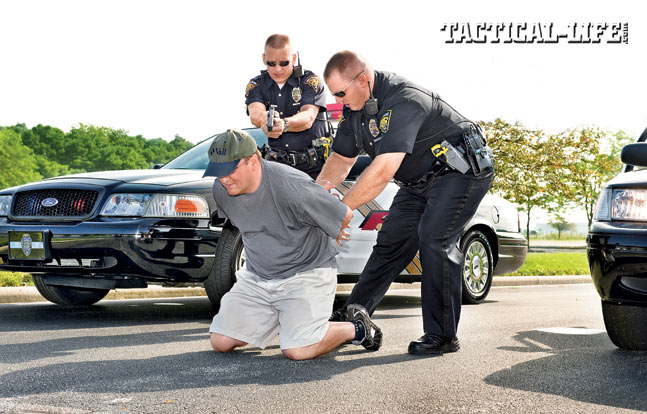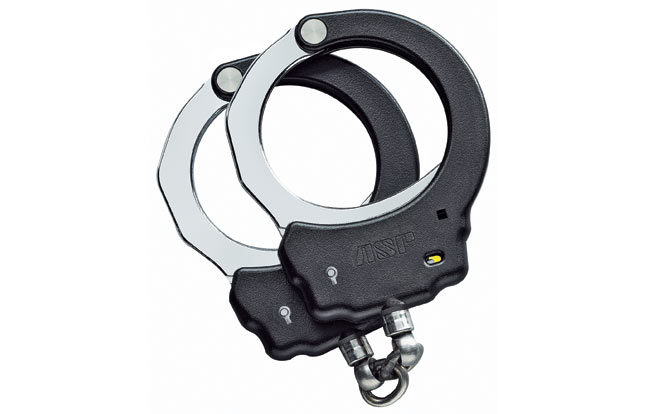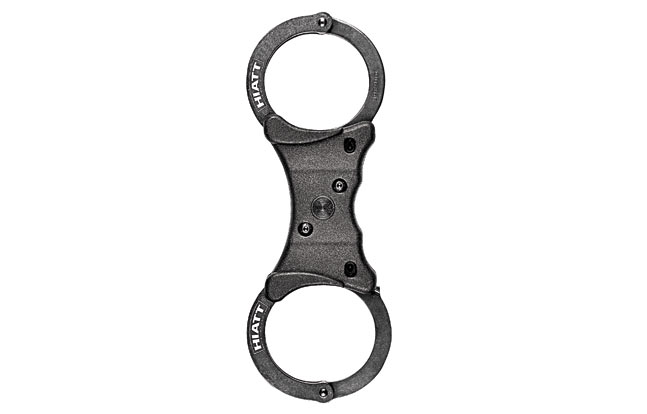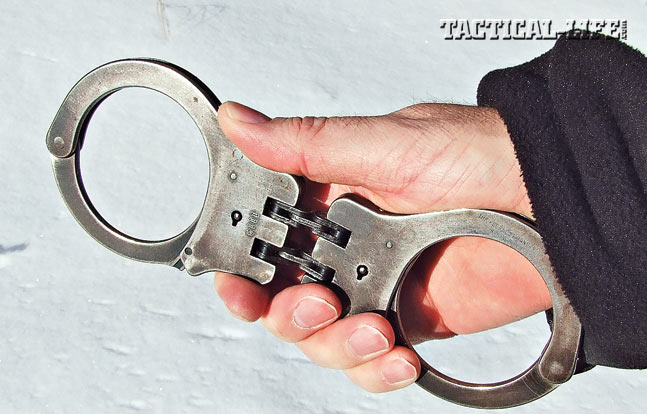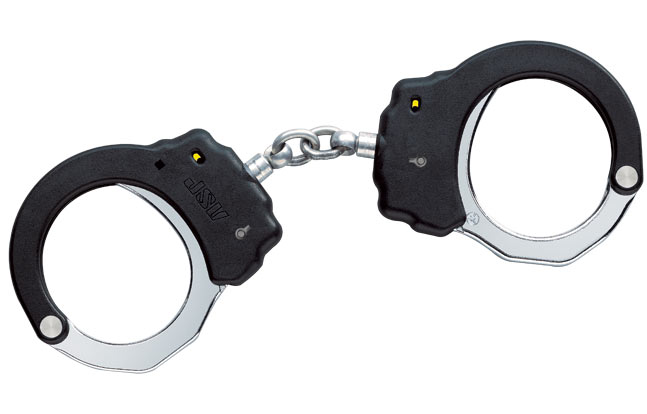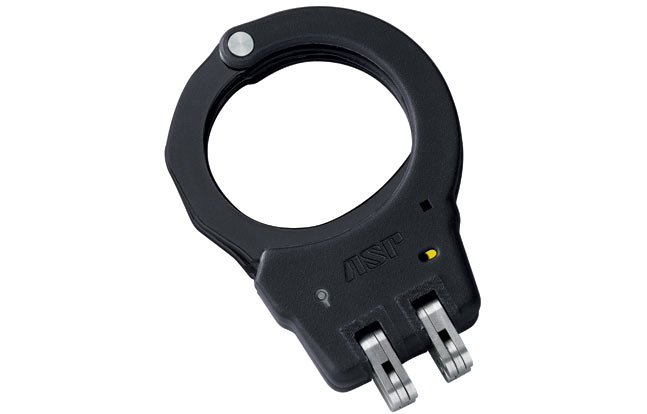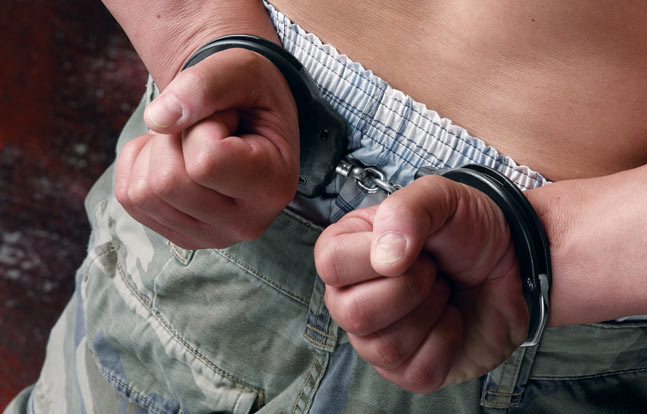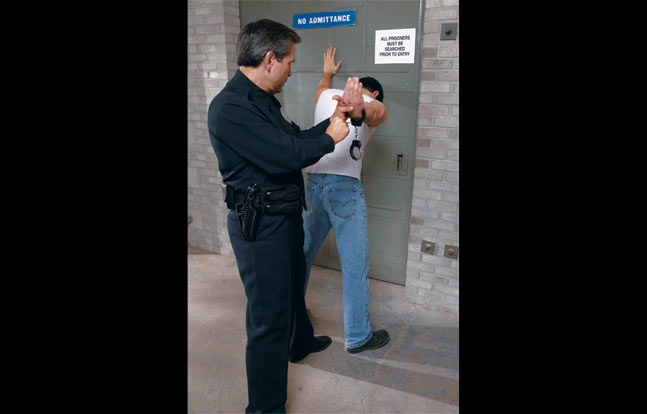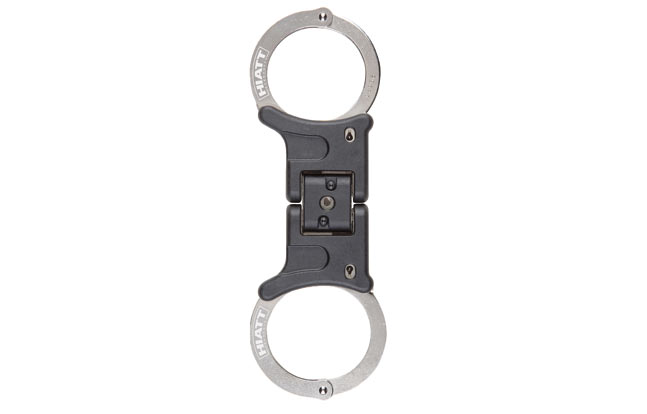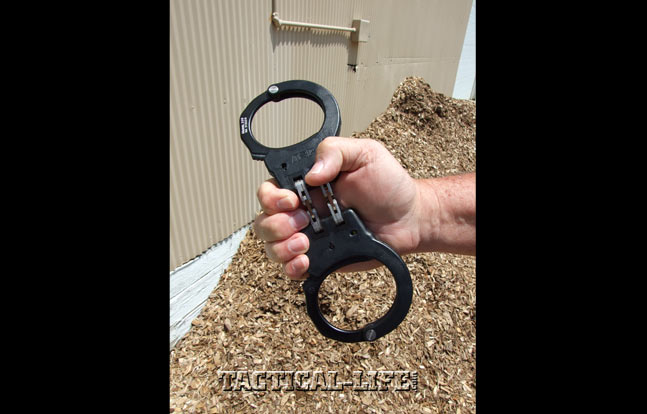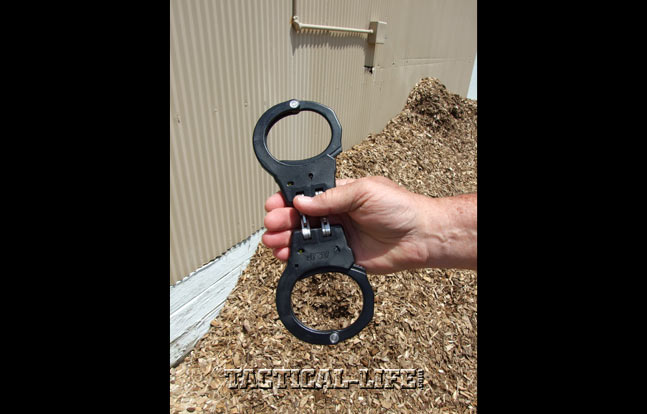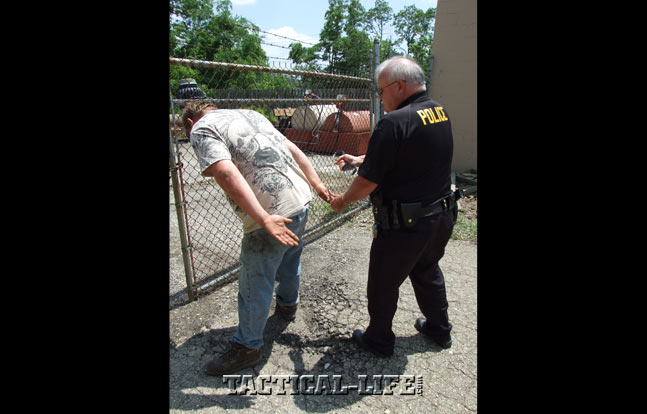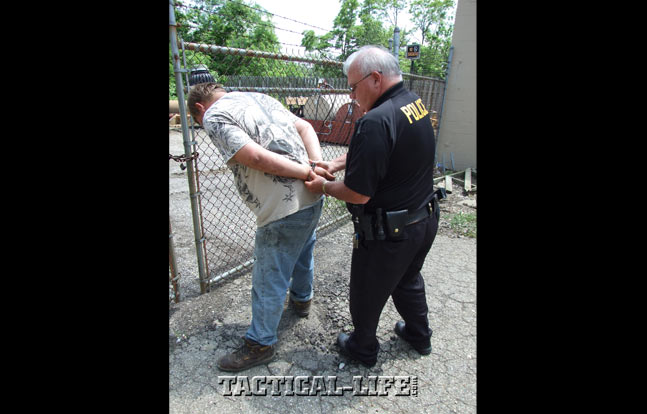When I was part of our countywide drug enforcement unit back in 1983, our team was arresting suspects from whom we had been making undercover drug buys. One of our dealers was “Ernie,” an extremely large individual who weighed in the 400-pound range—and it wasn’t all fat. We were aware that his wrists were enormous, and handcuffs would not fit. In order to restrain Ernie, I obtained a set of leg shackles from the jail to use in lieu of handcuffs. Not only would we be able to accommodate his wrists, but the long chain would also allow for handcuffing him behind his back.
Equipped to make the arrest, we did a last buy/bust on him for a small quantity of marijuana. We got him out of his vehicle, and I had him turn around so I could apply the leg shackles to his wrists. Ernie was not combative—he was actually a very polite “gentle giant.” But even the leg shackles were too small for his wrists! And, our jail had a rule that no prisoner could come into the jail without restraints. Fortunately, our supervisor had nylon flexicuffs in his briefcase. We hooked two together to double their length. We then “handcuffed” Ernie in front and worked to fit him into one of our cars. Fortunately for everyone involved, Ernie stayed handcuffed at our request.
And that’s what handcuffs are—a request. A request by the arresting officer that the arrestee comport themselves in such a fashion as to be compliant with whatever the officer requires of them. Having an arrestee stay under control is entirely our decision. It is our responsibility to restrain them in such a way that their options are limited to strict compliance to our orders.
Advertisement — Continue Reading Below
There are some fundamental principles that need to be followed in order for an officer to make the most of their handcuffs and maintain their safety.
- 1. Establish unquestionable control over your arrestee. This means making it clear by officer command presence and verbalization that any particular violator is under arrest and that the game is over.
- 2. Get the handcuffs on the wrists as quickly as you can. Studies indicate that 67 percent of all resistance begins at the point the first handcuff shackle is applied. You need to practice quickly applying handcuffs to the point where, once you assume physical control of a cooperating average-sized arrestee, you can cuff them in two seconds or less.
- 3. In every situation possible, handcuff field arrests from behind. Incarcerated offenders ready for transport can be handcuffed in front, but use a bellyband to secure the handcuffs close to their body.
- 4. Once the handcuffs are applied in any situation, make sure the shackles are tightened only to a point where you can fit your pinky finger between the shackle and the arrestee’s wrist to prevent nerve damage. Then double-lock the handcuffs so that they cannot become tighter if the suspect is leaning back against them.

Cuff Choices
I have been a big fan of hinged handcuffs for 33-plus years of policing. Most hinged handcuffs use what looks a lot like two or three pieces of bicycle chain segments to hold the shackles together. Unlike the traditional chain handcuff, the hinges prevent any lateral movement of the cuffs. I still have my original pair of Peerless blued-steel hinged handcuffs, with a serial number of 1119. I’ve used those handcuffs over my entire career, and Peerless still catalogs them. They have never failed me.
Advertisement — Continue Reading Below
Peerless is not the only game in town. Hiatt, a brand of The Safariland Group, markets several handcuff variations. Hiatt is now marketing traditional chain and hinged styles in standard, oversized and lightweight formats, as well as two more specialized designs, the Ultimate Hinge handcuff and the Rigid Handcuff. The Ultimate Hinge can be used as a traditional hinged handcuff or locked open into a solid-bar design. The Rigid is a true solid-bar design. Solid-bar designs are used to prohibit even the slightest amount of movement for individuals who may have proven escape prone in the past. The Rigid is best used in a jail or correctional setting and not in the field. The Ultimate can be used in both settings depending upon the mode selected. Hiatt handcuffs are available in nickel and black finishes. The handcuffs feature Steloy metal alloy construction for weight savings and are 40 percent lighter and 17 percent larger than standard cuffs while still retaining standard handcuff strength.

Hinged and chain-link handcuffs each have their own set of advantages and disadvantages over the other. For this report, I decided to also get a sample of the latest iteration of each type from ASP. ASP decided a few years ago to produce its own line of quality handcuffs, and it did so in a big way. The biggest technological advance ASP made in handcuffs was to put keyholes and double-lock slots on both sides of the shackles! No matter which way you put the handcuffs on an arrestee in the heat of the moment, you will be able to easily access a keyhole when the handcuffs are to be removed. No more complaining by corrections officers at the county jail when they have difficulty accessing the keyhole on your prisoner’s handcuffs. But that isn’t the only improved part of ASP handcuffs.
ASP sent me its “black steel” chain handcuffs as well as its “black aluminum” hinged handcuffs. Both hinge and chain styles are available in the black steel or black aluminum configurations. Both designs use ordnance-grade polymer overmolding on top of the stainless steel frame. The polymer is mounted on the frame using 75 tons of pressure for adherence. The polymer overmolding provides a bit more control through its non-slip surface, as well as additional rust resistance, than bare-metal handcuffs. ASP’s aluminum handcuffs aren’t all aluminum, which is a good thing. Only the bow, or blade as I call it, is aluminum. The rest of the cuff, including the hinge, is stainless steel, just like the other steel handcuffs in the ASP line. The aluminum blade is anodized black. The bow on the black steel models is left bright. The polymer is black. If you don’t like those color choices, the ASP Identifier series gives a number of color choices for the polymer handcuff covering.
Advertisement — Continue Reading Below

Restraint Tactics
So which style should you choose for duty? As I said, I have long favored the hinge style of handcuff. With a properly applied hinged handcuff, it is nearly impossible for even the most limber person to get their hands from their back to their front within the confines of a cruiser. In fact, during 10 years of full-time policing using this application method, I only had one person do a back-to-front switch, and that was while standing in a holding cell.
How do you position hinged handcuffs for the most security? Simple. Have your suspect bring their arms behind their back. Take their right arm and, holding the hinged handcuffs vertically with the bow towards the suspect, cuff the right wrist with the lower handcuff. Next, bring the left arm over the top of the right arm, parallel to it, and cuff the left wrist with the top handcuff. The suspect can’t twist the hinged handcuff around to allow them the positioning needed to move their hands from back to front. Note that hinged handcuffs can also be applied in the same style with the same techniques that chain hancuffs can. The advantage that chain handcuffs have over hinged handcuffs is that, because they can turn and swivel, they are easier to get on resisting suspects.
Advertisement — Continue Reading Below
Handcuffing suspects requires great attention to detail. Unfortunately, we officers do it so often that it becomes routine. An improperly secured arresstee can kill you. Apply handcuffs properly and be on guard as long as you are in your arrestee’s presence. Remember, handcuffs are only a request.
For More Information
Advertisement — Continue Reading Below
Hiatt
http://www.hiatts.com
Peerless
http://www.peerless.net
